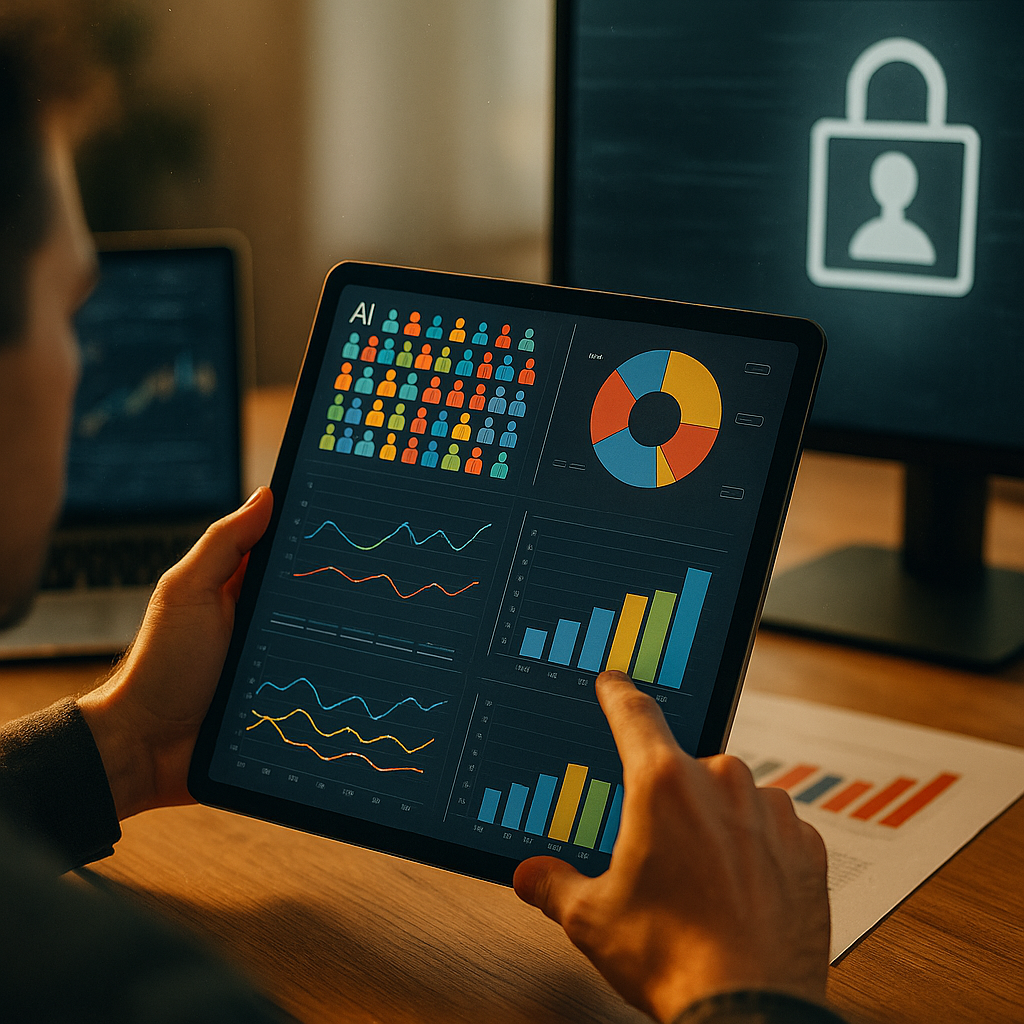The data privacy implications of using AI for audience analysis are front and center in 2025, as businesses increasingly rely on intelligent insights to engage customers. As AI becomes more sophisticated, so do privacy concerns, shaping the digital marketing landscape. Understanding these impacts is essential for brands that want to thrive securely—what hidden risks and opportunities should you know?
AI-Driven Audience Analysis: Shaping Modern Data Collection
AI-driven audience analysis leverages advanced algorithms to interpret user behaviors, preferences, and demographics at scale. By parsing through vast datasets, organizations can segment audiences, predict trends, and personalize communication. However, the nature of data ingested, especially when it includes identifiers, means brands must consider how collection processes may inadvertently expose users to privacy risks. As consumer expectations for confidentiality rise, the integration of AI into audience assessment must keep pace with evolving data privacy standards.
The Role of Personal Data Protection in AI Audience Segmentation
Personal data protection is paramount when utilizing AI for segmenting audiences. With stricter regulations like the Digital Markets Act and evolving national laws, companies collecting behavioral data must ensure compliance throughout the data lifecycle. AI systems often require access to personally identifiable information (PII) to deliver individualized recommendations. If not properly managed, these systems could lead to unauthorized data sharing or breaches. Therefore, implementing privacy-by-design principles in AI models is now an industry expectation. Brands are advised to anonymize datasets when possible and seek informed consent transparently to stay on the right side of the law.
Transparency and Consent: Building Trust Through Ethical Analytics
Transparency in AI-powered analytics isn’t only a legal obligation—it’s crucial for earning consumer trust. Audience analysis tools now require companies to provide clear, concise explanations of data usage policies and to offer granular control over user privacy preferences. This means simplifying consent management, making opt-ins and opt-outs more accessible, and continuously educating users on their rights. By prioritizing ethical analytics, companies signal their respect for user privacy, leading to stronger, trust-based brand relationships and decreased likelihood of reputational harm from data misuse.
Data Security Risks Unique to AI Audience Insights
AI systems introduce unique data security risks in audience analysis:
- Inference Attacks: Sophisticated AI models may infer sensitive data points even from anonymized datasets, opening doors to privacy violations.
- Model Vulnerabilities: If hackers compromise AI models, they might extract patterns or user data embedded within the system.
- Data Storage: Massive volumes of audience data often reside in cloud environments where improper access controls can create exploitable weaknesses.
To mitigate these risks, organizations must regularly audit AI pipelines, encrypt data in transit and at rest, and follow the latest data minimization strategies. Employing cybersecurity best practices—such as robust authentication, regular vulnerability scans, and incident response planning—can further safeguard sensitive audience information.
Balancing Business Value and Data Privacy in AI Marketing
Striking a balance between business growth and data privacy within AI marketing is challenging but achievable. On one hand, AI-driven insights fuel targeted campaigns and higher ROI. On the other, the mishandling of audience data can lead to regulatory penalties and loss of customer trust. Leading companies in 2025 prioritize:
- Privacy-first design: Embedding privacy checks from the inception of AI-powered projects.
- Transparent communication: Clearly detailing how data shapes audience analysis and marketing initiatives.
- User empowerment: Providing straightforward tools for users to review, download, or delete their data.
Adopting these best practices not only aids compliance but also drives loyalty, as customers recognize and reward brands that respect their privacy.
Navigating the Regulatory Landscape for AI Audience Analysis
In 2025, regulatory scrutiny over AI and audience data is the highest it has ever been. International bodies and local authorities continue to refine rules to keep pace with emerging technologies. Significant compliance considerations include:
- Automated decision-making transparency: Disclosing when and how AI influences outcomes that affect individuals.
- Cross-border data transfers: Ensuring data transfers between jurisdictions comply with differing privacy standards.
- Regular data protection impact assessments: Proactively identifying and addressing privacy risks in AI-driven projects.
Forward-thinking companies are investing in legal expertise, robust documentation, and agile compliance processes. This not only avoids costly legal entanglements but positions brands as leaders in responsible AI adoption.
In 2025, the data privacy implications of using AI for audience analysis demand attention and adaptability. Combining ethical data practices, transparency, and adherence to evolving regulations is essential to unlock AI’s marketing potential without sacrificing user trust.
Frequently Asked Questions: AI Audience Analysis and Data Privacy
-
What is audience analysis with AI?
Audience analysis with AI refers to using machine learning and data tools to extract insights from audience behaviors and demographics, helping brands personalize marketing while optimizing engagement.
-
Are privacy risks higher when using AI in marketing?
Yes. AI can amplify privacy risks by analyzing more personal data at scale and uncovering patterns that might identify individuals, making strong protections and compliance critical.
-
How can companies use AI for audience insights and remain compliant?
They should incorporate privacy-by-design in workflows, anonymize data wherever possible, obtain informed consent, and actively monitor compliance with current regulations such as the Digital Markets Act.
-
Can users control what data is used in AI marketing?
Yes. Progressive brands provide user-friendly privacy dashboards, allowing individuals to manage, correct, or delete their data used in AI-powered audience analysis.
-
What’s the main takeaway for marketers in 2025?
Embed privacy at every stage. By prioritizing ethical, transparent data practices, marketers can leverage AI’s power for audience analysis while building lasting consumer trust.
